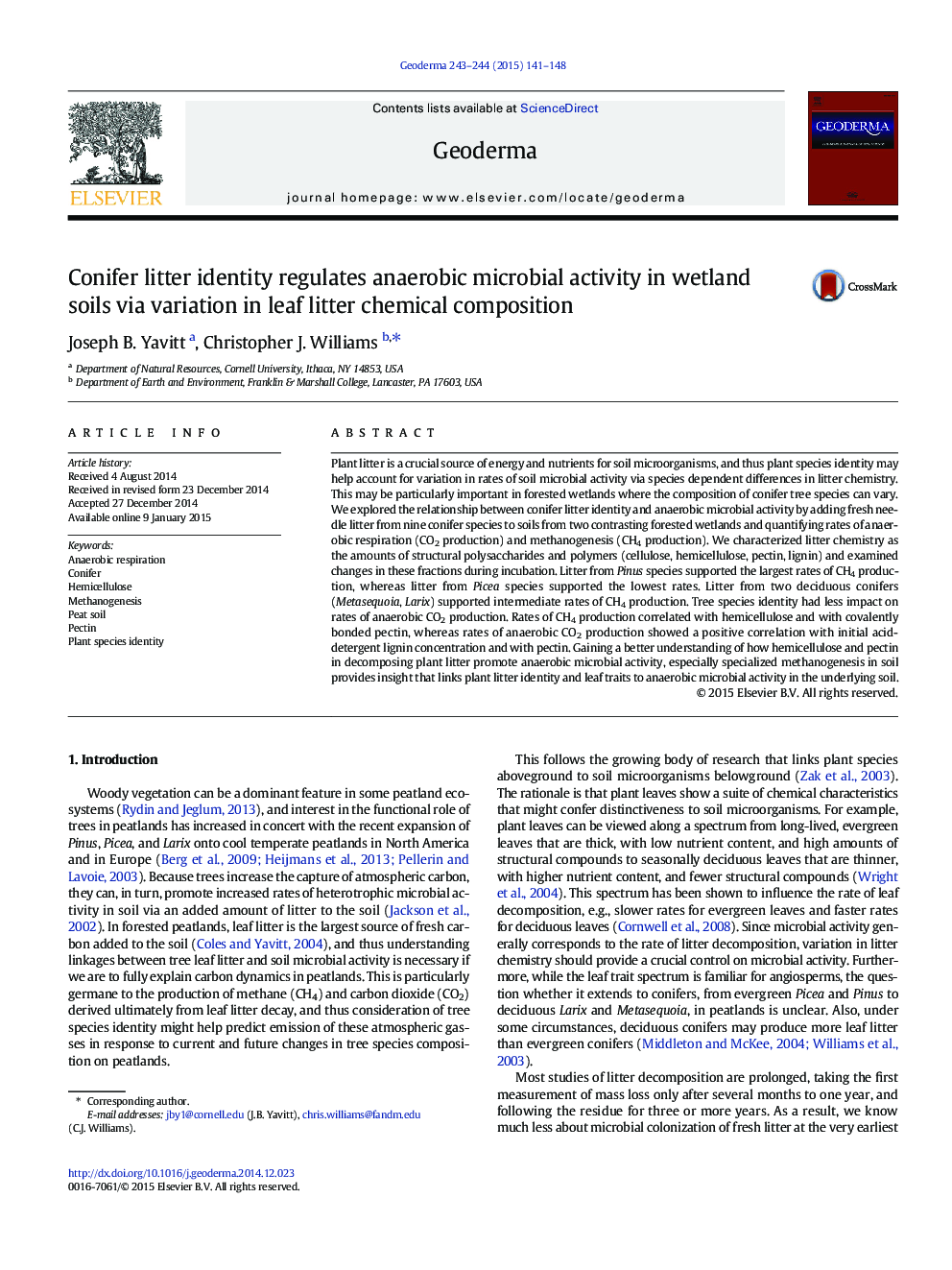| Article ID | Journal | Published Year | Pages | File Type |
|---|---|---|---|---|
| 4573213 | Geoderma | 2015 | 8 Pages |
•We studied the anaerobic microbial response of wetland soils to the addition of conifer litter.•Evergreen litter supported abundant anaerobic microbial activity versus deciduous conifer litter.•Rates of CH4 production correlated with hemicellulose and pectin concentrations.•Rates of anaerobic CO2 production correlated with lignin and pectin.•Different biochemical fractions specific to litter of certain taxa explain our results.
Plant litter is a crucial source of energy and nutrients for soil microorganisms, and thus plant species identity may help account for variation in rates of soil microbial activity via species dependent differences in litter chemistry. This may be particularly important in forested wetlands where the composition of conifer tree species can vary. We explored the relationship between conifer litter identity and anaerobic microbial activity by adding fresh needle litter from nine conifer species to soils from two contrasting forested wetlands and quantifying rates of anaerobic respiration (CO2 production) and methanogenesis (CH4 production). We characterized litter chemistry as the amounts of structural polysaccharides and polymers (cellulose, hemicellulose, pectin, lignin) and examined changes in these fractions during incubation. Litter from Pinus species supported the largest rates of CH4 production, whereas litter from Picea species supported the lowest rates. Litter from two deciduous conifers (Metasequoia, Larix) supported intermediate rates of CH4 production. Tree species identity had less impact on rates of anaerobic CO2 production. Rates of CH4 production correlated with hemicellulose and with covalently bonded pectin, whereas rates of anaerobic CO2 production showed a positive correlation with initial acid-detergent lignin concentration and with pectin. Gaining a better understanding of how hemicellulose and pectin in decomposing plant litter promote anaerobic microbial activity, especially specialized methanogenesis in soil provides insight that links plant litter identity and leaf traits to anaerobic microbial activity in the underlying soil.
